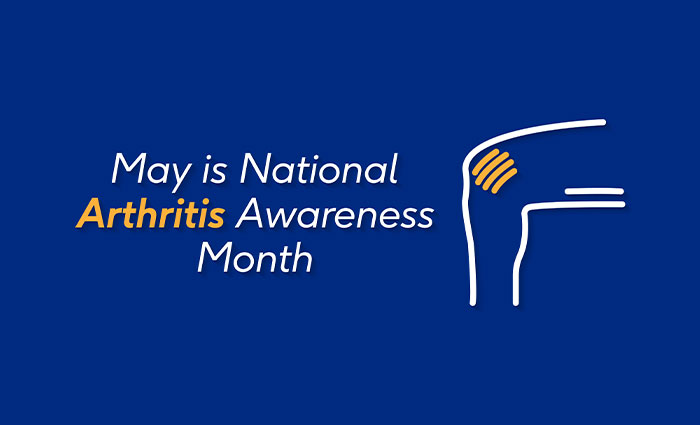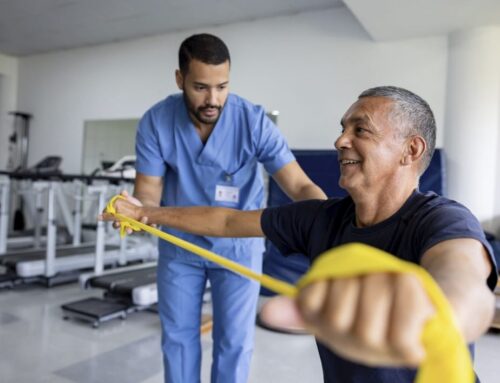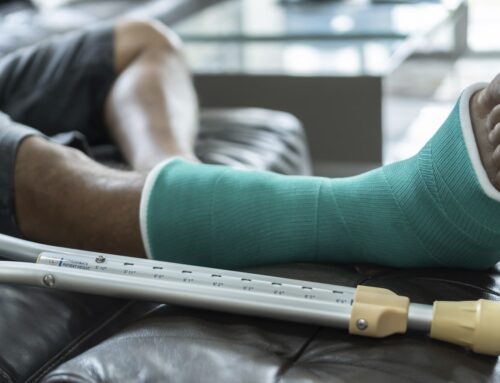The month of May is known nationally as Arthritis Awareness Month and for good reason. You see, osteoarthritis is a disease that affects over 32 million people—a number that has steadily been on the rise. Those with osteoarthritis (or any form of arthritis) know the difficulties of living with constant pain and limited movement. Keep reading for 15 osteoarthritis facts you may not know about this especially common type of arthritis.
Osteoarthritis facts
Osteoarthritis is a degenerative disease
This disease is usually caused by gradual damage to joint cartilage that worsens over time. It often causes changes around the joints, affecting a person’s range of motion and frequent pain. Other issues that could surface as a result of this disease include fluid building up within the joints or an overgrowth of bone.
Osteoarthritis is the leading cause of disability in the U.S.
Arthritis affects millions of people in America. As it gradually weakens joints and inhibits mobility, falls, broken bones and other injuries become more and more frequent. Some individuals will even need joint replacements.
Weight-bearing joints are most affected
Most people experience osteoarthritis in one of their joints that supports a lot of their body weight, such as a knee, hip or even the spine. Those who are overweight will suffer from more pain in their joints.
Fingers can also be affected
Even though it is typical for weight-bearing joints to become arthritic, it is also possible to experience osteoarthritis in your fingers. Individuals who have suffered injuries or have had previous infections and inflammation in the joints are more likely to develop this disease.
Women are more likely to develop osteoarthritis
At this time, the science remains unclear on why women are more likely to develop osteoarthritis. However, ongoing research has pointed to estrogen as a likely cause. When a woman has lower levels of estrogen due to menopause, she’s at greater risk of developing this disease. It may be beneficial to receive estrogen replacement therapy so as to lower the risk.
Repetitive movement or injuries can cause osteoarthritis
Unfortunately, an injury sustained years ago may put you at increased risk for having osteoarthritis later on—especially if the injury was serious in nature. Athletes, for example, who have experienced knee injuries, such as a torn ligament, may develop arthritis in their knee. Repetitive movements such as bending the knees, standing for long periods of time or lifting also commonly bring about osteoarthritis.
Risk factors associated with this disease
There are many risk factors that contribute to the onset of osteoarthritis. Chief among them are age, obesity, previous injury, a family history of arthritis and muscle weakness. Certain diseases such as rheumatoid arthritis, hemochromatosis or acromegaly greatly increase your risk of developing osteoarthritis.
Osteoarthritis increases the risk of falling
People with osteoarthritis are at a heightened risk of falling. Avoiding falls completely is not possible, but seeking treatment (such as receiving cortisone shots) to improve joint pain may be a solution. One way to help lessen the risk and frequency of falling is to use a mobility aid, such as a cane or walker. Another option is to have a climbing aid installed in stairways or a grab bar in the shower. Preventative measures are the best course of action to decrease the chance of falling.
Exercise is important
Keeping physically active is important for everyone, but it is especially important for those with osteoarthritis. It can be difficult keeping a workout routine when your joints are in moderate-to-intense pain, but exercise can ease tight muscles and ligaments. This allows for better movement and less strain on the joints. Maintaining a healthy weight will also alleviate painful joints as well. The exercise that you participate in does not have to be too strenuous. In fact, it is wise to speak with your doctor first about the most appropriate physical activities to join in. Some activities to think about are yoga, swimming, bike riding or walking.
READ: 10 Best At-Home Exercises for Arthritis
Physical therapy can help those with osteoarthritis
As mentioned above, exercise is beneficial to easing the symptoms of osteoarthritis. Physical therapy can be another helpful solution. Not only does it promote stronger muscles and ligaments, but it also helps with body alignment and balance.
Osteoarthritis can affect sleep and mood
Those with osteoarthritis know that experiencing different levels of pain is part of the disease. The pain can bother you throughout the day and night, making it difficult to complete everyday tasks or get enough sleep at night. When you cannot get sufficient rest, you are bound to be irritable the next day. Constant pain can consume your daily life, leisure activities and sleeping, resulting in mood swings. But you do not have to live this way. Treating the symptoms of osteoarthritis can help you to not only relieve pain but also relieve feelings of hopelessness.
Nutritional supplements may help
Some nutritional supplements claim to help treat or mitigate the effects of osteoarthritis, glucosamine and chondroitin being a few examples. These are available in most grocery and health food stores. However, there is no proven research that demonstrates that either supplement will treat symptoms. Other suggested supplements are avocado-soybean unsaponifiable and omega-3 fatty acids. Before taking any supplements, you should always speak with your doctor.
Treatment options for managing pain
After you are diagnosed with osteoarthritis, your doctor may recommend several options to help you manage your symptoms. Medication can help you tolerate your pain. Exercising, maintaining a healthy weight, physical therapy and joint protection techniques are other ways to help manage symptoms.
Joint replacements may be a treatment solution
For those with severe cases of osteoarthritis, hip or knee replacements is a possible solution. Trying less invasive alternatives is a common course of action first, as most people would prefer not to undergo surgery. Typically, this is the most viable option for patients who have dealt with chronic pain with little to no improvement for many years. But, joint replacement is a safe procedure that allows osteoarthritic individuals to enjoy a more pain-free life. Speak with your doctor about possible treatments.
Early diagnosis and treatment
If you suspect that you are suffering from arthritis, make an appointment with your doctor as soon as possible. The earlier you can be diagnosed, the sooner you can begin treatment.
Arthritis can be a debilitating disease affecting every aspect of an individual’s life. At Cary Orthopaedics, our specialists have extensive experience treating osteoarthritis, starting with minimally invasive techniques. Contact us today to make an appointment and learn more about your options.






